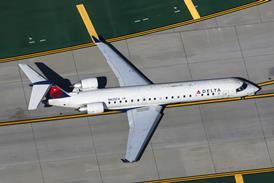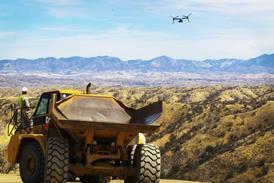Time did not stand still for the big light-aircraft manufacturers while they sought and gained product-liability reform. This ultimately allowed them to re-enter their former markets, but by that time, US production had dropped from its early-1980s peak of about 70 light single- and twin-engined aircraft a day, to a trickle produced by a handful of manufacturers including Beechcraft, Maule, Mooney and Piper.
The hiatus led to the virtual dismantling of that industry's vast sales and marketing, flying- school and product support networks, making it unlikely that it would ever be rebuilt exactly as before.
Even before its decline, some of the industry's potential market had already gravitated to other options including ultralight (also known as microlight), experimental and homebuilt aircraft. These presented options ranging from the most fundamental airframes based on improvements to hang-glider-style structures or conventional Auster or Piper Cub configuration, to aerodynamic and structural designs more advanced than any current US Federal Aviation Administration-certificated light aircraft.
Converts quickly found that capital and operating costs were significantly lower, the regulatory regime was far less restrictive, there was a much wider range of products to choose from, and maintenance was vastly simplified.
As one Australian flying school points out: "If you treat the engine and the instruments as single components, the [composite-built] Jabiru parts count is 200. On a Cessna 172, it's about 7,000. Then you have far lower fuel consumption, engine-overhaul costs and airframe maintenance, lower weight-related airport and airways charges, even reduced hangar space. It all adds up to more affordable basic training, and that's a trend that's going to be more and more important when people decide how and where they're going to learn to fly."
The new global market for uncertificated recreational aircraft has since flourished to such an extent that only a handful of very-light-aircraft (VLA) manufacturers have so far shown any interest in the fresh opportunities for certificated primary trainers, which opened up when new standards were established by Australian, Canadian, European and US civil-aviation authorities.
Australia was among the first states to tighten airworthiness and construction standards in the fast-growing VLA industry. While allowing the manufacture and sale of existing factory-built ultralights to continue under a sunset clause, its regulators halted the introduction of new factory-built designs under existing standards. These were replaced with new rules under which owners could choose one of two courses.
They could register their machines with their own sports flying association, where they would be restricted to personal use and pilot training, with the association responsible for pilot licensing and airworthiness oversight; or they could be operated under Australian Civil Aviation Safety Authority (CASA) rules. If they chose the latter course, their aircraft had to be fitted with certificated engines and propellers, maintained by licensed engineers, and flown only by CASA-licensed pilots.
Their reward for adopting the higher level was that aircraft complying with the new rules could be certificated to higher gross weights, while their ultralight versions remained limited to 450kg. Importantly, although they could not carry paying passengers, they could also be used in flying schools, for pilot hire, for non-passenger operations such as photography, aerial spotting, and "-for other commercial activities for which the design is approved".
The Australian rules, developed earlier, are more restrictive than Europe's joint airworthiness regulations for very-light aircraft (JAR/ VLA). Australia sets a maximum stall speed of 45kt (85km/h) in cruise configuration, but imposes a maximum take-off weight limit of 450kg, which may be increased to 480kg if the stall speed is lower than 40kt. Australian aircraft limited by that constraint, however, may (and do) operate there if certificated under the less restrictive JAR/VLA rules. Australia is also about to adopt the US Primary Category, which means that the European and US rules will eventually replace the Australian standard.
Fraser Anning, who markets the Queensland-built Skyfox series, is now convinced that some industry participants are overlooking significant future opportunities for the manufacture of commercial-use aircraft: "ICAO [the International Civil Aviation Organisation] did a survey six years ago, and identified that an extra 33,000 two-seat training aircraft were needed worldwide at that time. So far, nobody has even scratched the surface," he asserts.
Anning says that one reason is that first-time manufacturers seriously underestimate the task of demonstrating compliance, even with new standards representing a notably easier certification path than does US Part 23 certifications. That seems to be borne out by the small number of aircraft certificated by Australian, European and US authorities; and by the number of stalled applications.
To date, Australia's CASA has certificated only the Skyfox and Jabiru ST under its own rules, and the Eagle XT-S under JAR/VLA.
JAA official Alain Leroy says that the Skyfox CA-25, earlier certificated under the Australian rule, was the first type to gain JAR/VLA certification - which has thus far also been extended to Diamond Aircraft's Katana, the Italian Sky Arrow, and the Australian-designed Eagle XT-S, now being built by Malaysian interests.
Primary category
The FAA's Primary Category is far more accommodating, providing for up to four seats and offering ample scope to certificate variants of prominent homebuilt types such as the Lancair.
Rules covering Primary Category aircraft, which have been in effect in the USA since 1992, define them as those "for personal and recreational use, accommodating up to four, weighing up to 1,225kg maximum gross weight, powered by a naturally aspirated single engine, with an unpressurised cabin, and a maximum stall speed of 61kt. Primary aircraft can be used for flight training and for rental, but cannot carry passengers for hire."
The improvement on the FAA's Normal Category Part 23 process is that applicants for Primary Category certification can customise the certification specifications to meet the intended use of the aircraft. "The objective was to provide the flying public with access to aircraft at lower cost than has been the case in the past, with the same level of safety," says the FAA. "There is a growing interest in this category among new-start companies, and those in the FAA Small Aircraft Directorate in Kansas City who have been working in this area sense that they will be seeing many more applications soon."
The US-built Quicksilver GT500 was the first Primary Category aircraft to gain FAA certification in July 1994, in the "Sport Plane Class", weighing less than 545 kg, and complying with Transport Canada's TP10141E design standards. To date, no other aircraft have been awarded Primary Category certification, although the FAA has eight more current applications, for the Avtech Jabiru ST, Legato, Merlin TD912, Rans S-7C, Seabird Seeker SB7L-360A, Seawind SW300, Sky Arrow 1200L, and Titan Tornado II. Of these, the Legato, Merlin, and Titan projects are "inactive at this time". The FAA has also certificated the Zenair CH2000, the Austrian-built DV 20 Katana and its Canadian-built counterpart Diamond DA 20-A1 to the JAR-VLA requirements. It is processing applications for six others.
The certification of aircraft such as the Eagle, Katana and Skyfox under more than one standard signals their makers' recognition of significant commercial markets for their aircraft; and their determination to be among the first arrivals in those markets. Diamond has built over 500 of its sports trainers in Austria and Canada, and has sold 480 in the USA, including 20 to one school. Production is now one aircraft per day.
Having achieved JAR/VLA certification in Australia, the new Malaysian owners of the Eagle XT-S are gearing up for major production at Langkawi, clearly with the burgeoning Asian training market in their sights. Eagle has, however, not yet detailed its production plans.
Skyfox, which plans initially to double its production rate to two a week, has sold several aircraft in Switzerland and the UK, and 12 in Thailand. Anning says that his firm's problem is its current low production capacity. "I'd like to go into Asia with an order book, but right now, we can't build enough for the Australian market." Anning, however, resists the proposition of selling off manufacturing rights. "Some people on our board think we should sell the technology and get some money in, but for the first time in the company's history, we're making a good profit. Why sell off our technology to get ourselves another competitor?" he asks.
All manufacturers are conscious of the potential Asian VLA market for recreational and commercial pilot training, with instructor training also a looming priority; and the probability that aircraft with sufficiently low operating costs will offer new opportunities to meet that demand and expand local training in the region. Already Japanese students training for private licences in Australia are paying A$120 ($95)/h for dual instruction in a Cessna 150, compared with the A$550 they pay in Japan.
A limiting factor for most manufacturers in the VLA category is the shortage of available certifiable engines and propellers. Although JAR/VLA aircraft must be fitted with a JAR22H certificated engine and a JAR22J certificated propeller, few manufacturers have taken the trouble to pursue certification, perceiving the market as negligible compared with that for engines in non-certificated light sports aircraft.
Bombardier Rotax therefore now commands an estimated 95% of the market with its 60kW (80hp) 912 engine. Jabiru, which was forced to design and build its own engine when KFM, its Italian supplier, ceased production, has now developed an improved 60kW model for which certification is all but complete. The company has already sold 120 uncertificated engines internationally, including several to Italy, and is clearly emerging as a meaningful competitor to Rotax, selling at a ready-to-install US price of $8,950, compared with Rotax's $11,000 for an equivalent installation. Jabiru's extensive use of automotive engine components, which allows the company to offer a guaranteed engine-overhaul price of $2,500, will ensure it a place in a growing market where there is mounting pressure to hold down prices.
For the same reasons, the aircraft most likely to attract the flying training industry are the lower-priced types now becoming available in the VLA and Primary categories.
Source: Flight International























